There's a moment in the 2002 Charlie Kaufman film
Adaptation, which is based on Susan Orlean's book
The Orchid Thief, when the toothless orchid hunter wades through chest-high swamp water in search of a rare varietal called the Ghost Orchid. At first you think, "Oh come on. All this for a plant?" But the more you learn about orchids — and the more you stare into their mesmerizing flowering faces — you begin to understand the almost spiritual hold they tend to have on people.
The lush, vibrant, sensually shaped forms of orchids and their seemingly endless varieties — there are some 30,000 naturally occuring species, meaning this is the largest family of flowering plants — make them somewhat of a mythical flower. If you're in New York between now and April 22, 2013, you can see more than 7,000 orchids during The Orchid Show at The New York Botanical Garden, the country's largest curated show featuring the plant.
The exhibition takes place in the garden's Victorian-style glass house, which is the largest of its kind in the country, and includes orchids, aroids, ferns, bromeliads, epiphytic cacti and more.
Info: The Orchid Show, The New York Botanical Garden; March 2 to April 22, 2013; open Tuesday through Sunday, 10 a.m. to 6 p.m. (closed on some holidays); $10 to $25
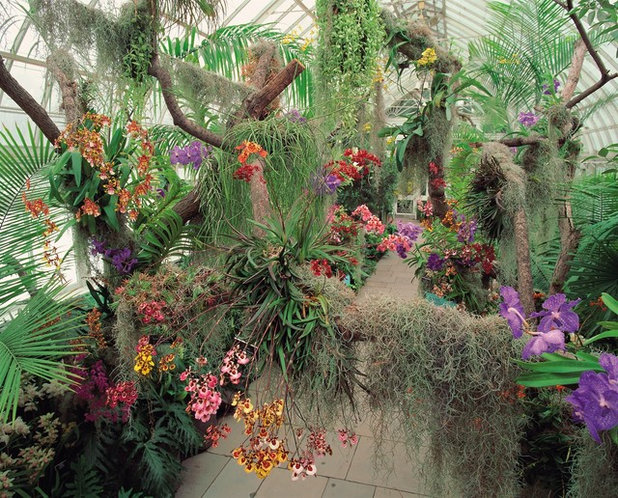
Unique this year is the incorporation of Hurricane Sandy–damaged trees, which will be used as design elements in the show and to support tree-dwelling plants.
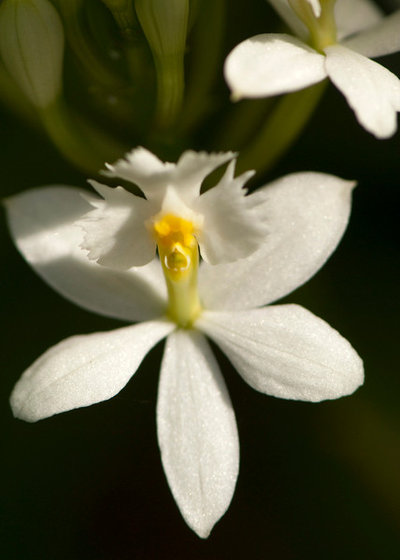
The New York Botanical Garden
Whimsical detailing on this Reed Orchid brings to mind a cartoonish character.
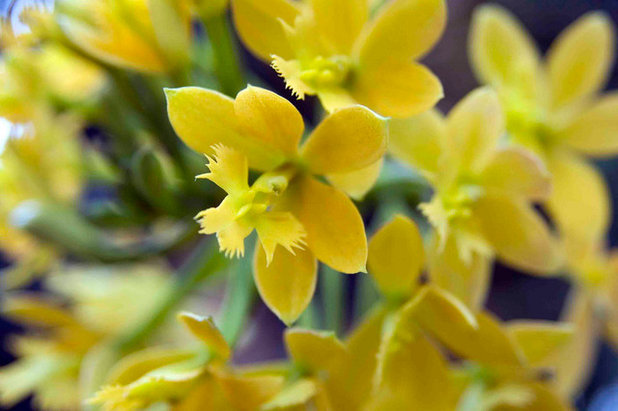
The New York Botanical Garden
The Reed Orchid has a unique fusion of soft and harsh forms.
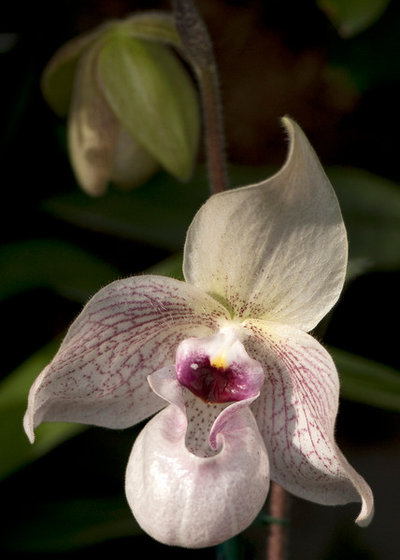
The New York Botanical Garden
The Slipper Orchid can have exaggerated teardrop-shaped petals. Hybrids of this flower have been made to make them easier to grow indoors.
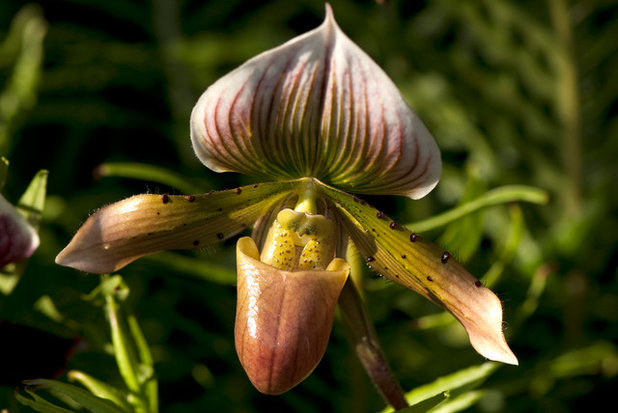
The New York Botanical Garden
This particular Slipper Orchid seems to be enticing a praying mantis.
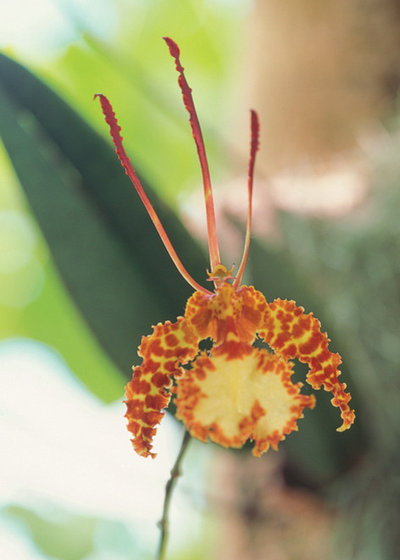
The New York Botanical Garden
A head-turning fractal design denotes the Butterfly Orchid.
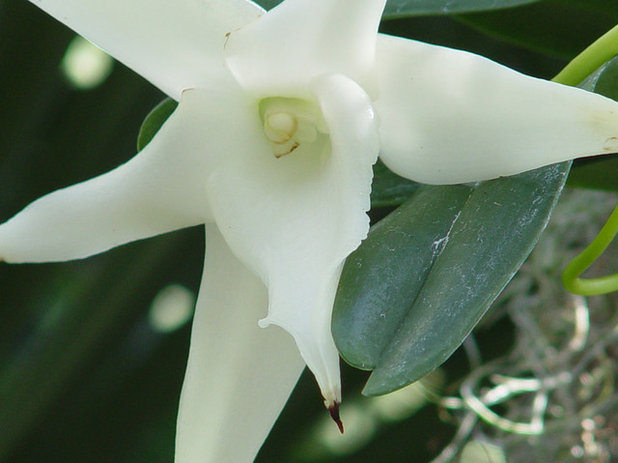
The New York Botanical Garden
Darwin's Star Orchid is a pointy variety with a creamy, elegant color.
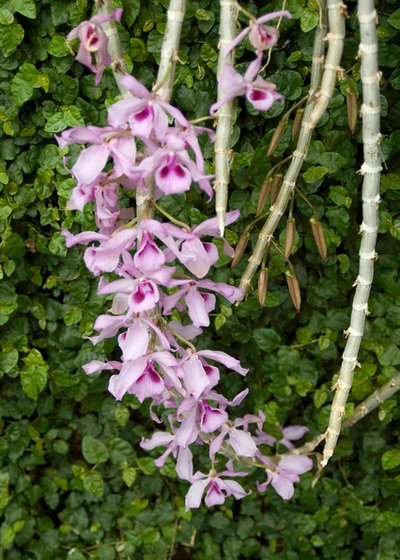
The New York Botanical Garden
The Cane Orchid drips and droops with a soft purple color.
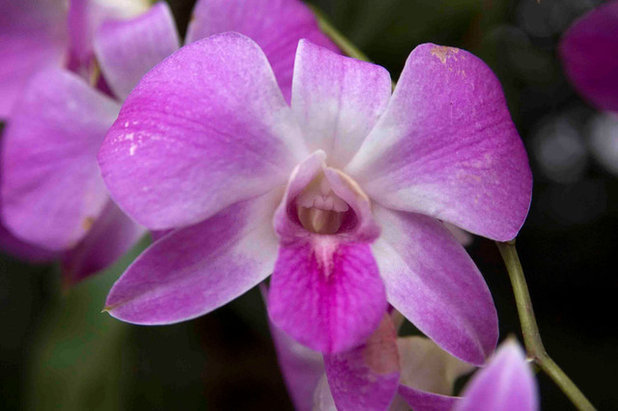
The New York Botanical Garden
This Cane Orchid oozes with deep lavender.
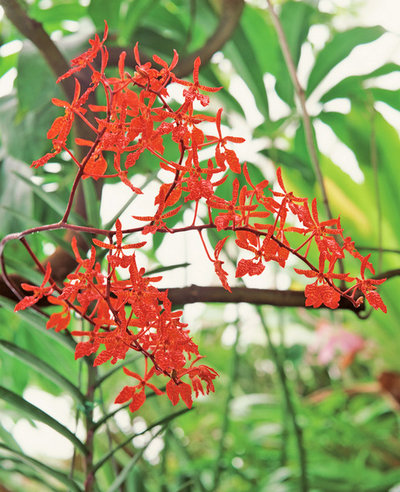
The New York Botanical Garden
The delicacy of the Renanthera is balanced by the strength of its fiery red color.
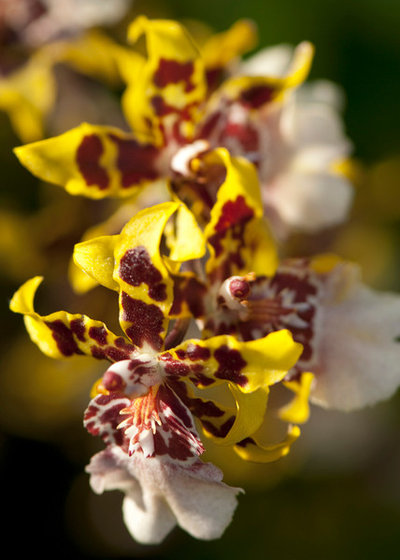
The New York Botanical Garden
Pattern and color on this American Moth Orchid create a stunning design.
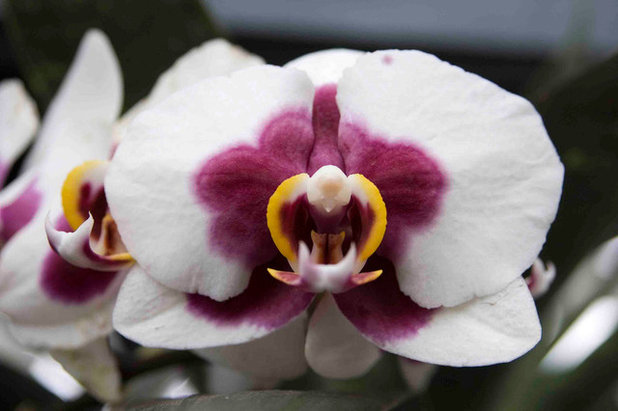
The New York Botanical Garden
How to Start Your Own Orchid Display at HomeYou can purchase a variety of orchids in almost any city. The most common type is the Moth Orchid (shown), which, according to garden designer and author Jenny Peterson, is among the easiest to maintain and keep indoors. Often available at supermarkets or Home Depot, Moth Orchids aren't as finicky as the more exotic kinds, which are available only at specialized orchid growers and nurseries and tend to require exacting conditions and humidity control. But the payoff — crazy-looking petal patterns and color combinations — is always worth it.
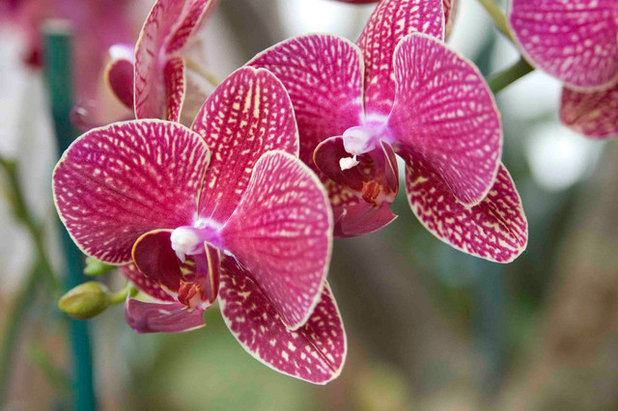
The New York Botanical Garden
Peterson's Moth Orchid maintenance tips:- Moth Orchids typically come already potted in a special soil mix that has a high peat content. Or you can grow them on a piece of tree bark.
- Always place the plant in indirect sunlight. A south- or east-facing window is best.
- Maintain a moderate temperature, between 75 and 85 degrees Fahrenheit. Even in a space cooled by an air conditioner, an orchid near a semisunny window will be just fine.
- Don't overwater! A common suggestion is to water once every seven to 10 days, but Peterson recommends watering only twice a month. She gives her orchids about half a cup of water on the first and 15th of every month. For bark-grown versions, mist the bark or submerge the bark piece in water once a week.
- Fertilize once a month using a special blend made just for orchids. Give bark-grown orchids a fertilizer that's high in nitrogen content.
- Don't give up. Peterson says it's best to keep consistent conditions and care, as orchids thrive with a regular routine. Their bright blooms can last for months, and if you continue to water and fertilize yours even after a bloom dies off, it should rebloom in a few months.
Do you grow orchids? We'd love to see them!





